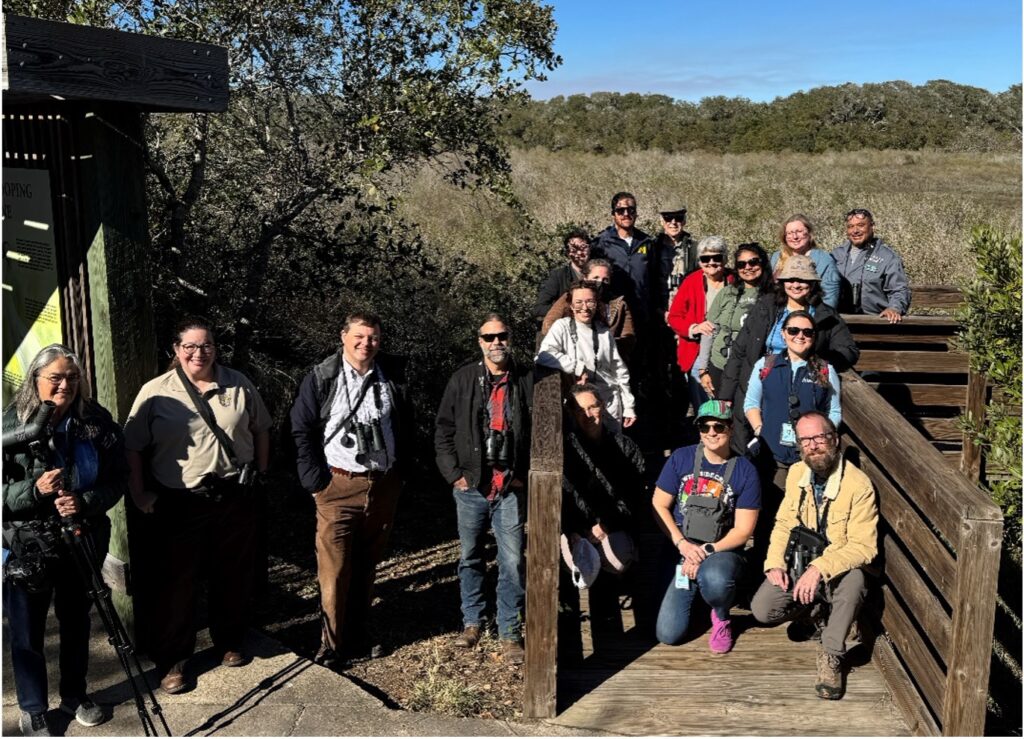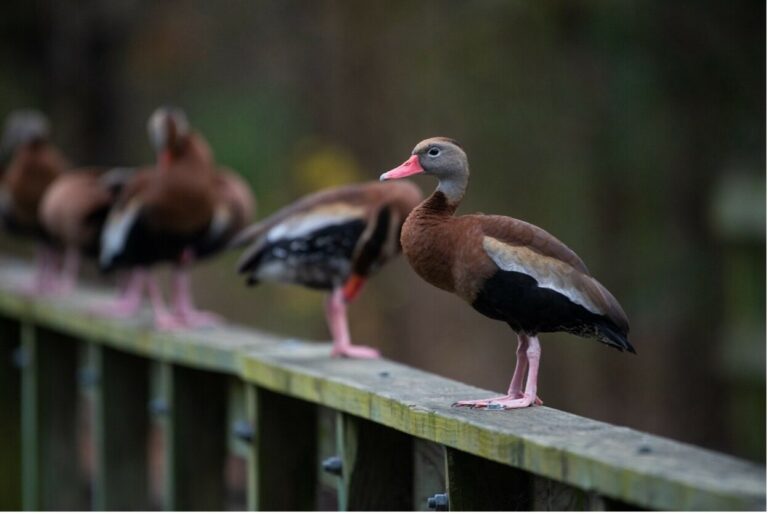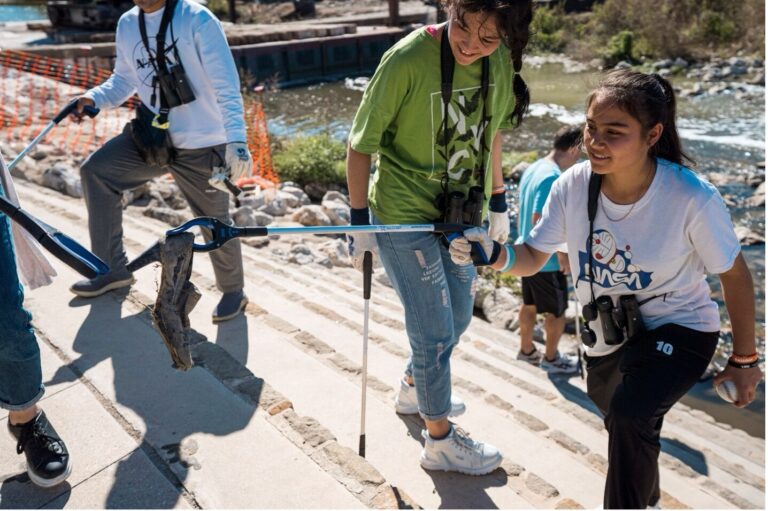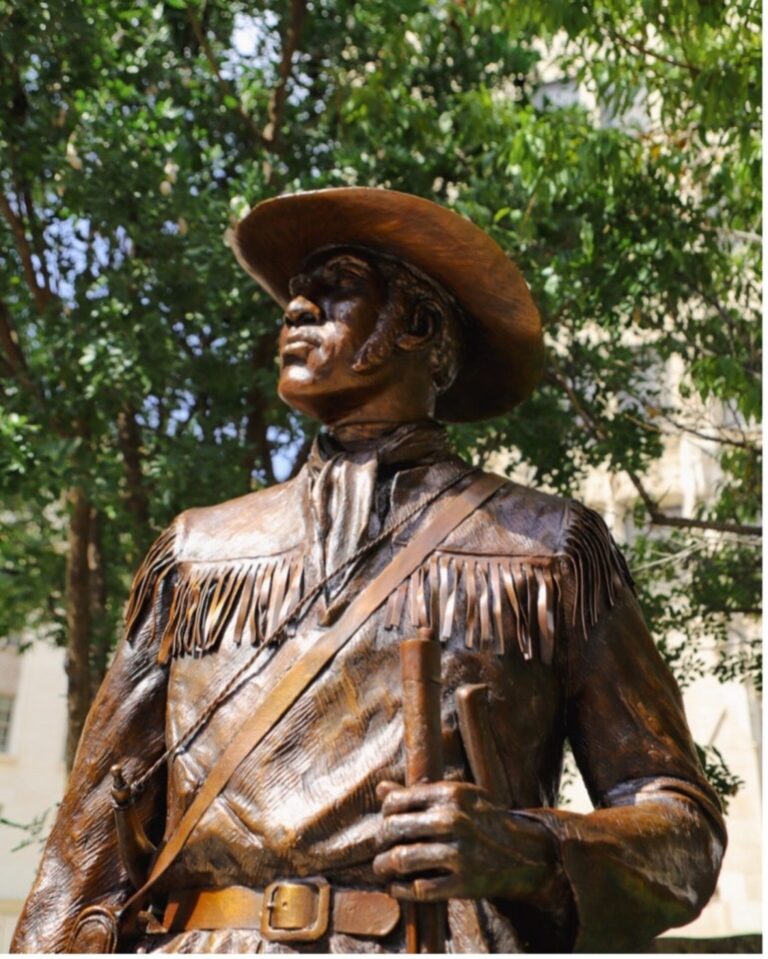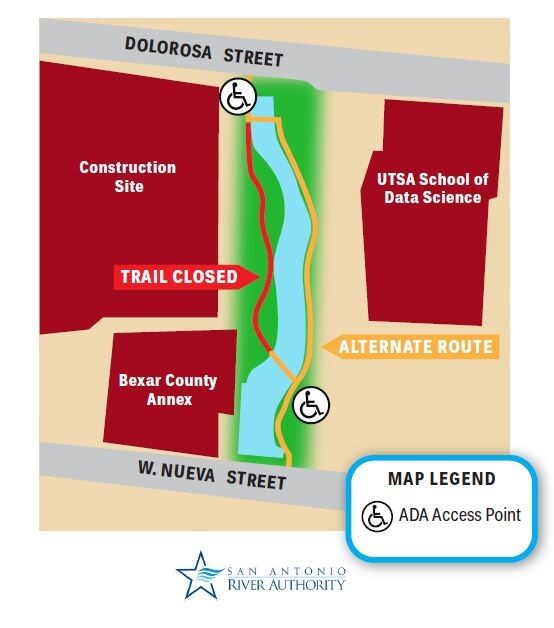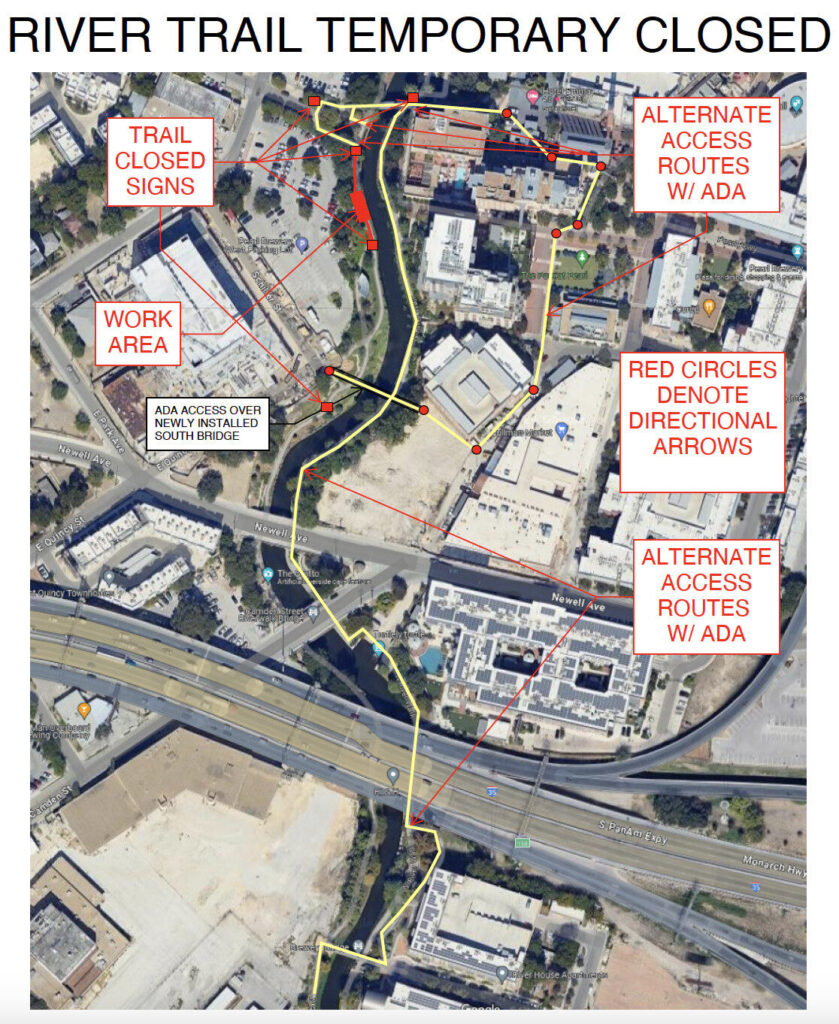The San Antonio River Authority (River Authority) team is so proud that our commitment to safe, clean, enjoyable creeks and rivers is supported by so many important community groups, including the River Authority’s Environmental Advisory Committee (EAC). The primary function of the EAC is to serve as the comprehensive public participation group that reviews and provides input on the environmental studies and programs at the River Authority. In addition to its other duties, the EAC acts as the Clean Rivers Program (CRP) Steering Committee.
The EAC routinely meets four times a year with three of the meetings held at the River Authority offices and parks in Bexar County, while one meeting is held at a pre-decided southern basin location. It is also important to note that all EAC and CRP Steering Committee meetings are open to the public for active participation. A wide variety of issues are discussed and all previous topics and agendas are available for viewing on our website.
From the Rivers to the Bay
In 2024, aligning with the vision of the River Authority to inspire action for healthy creeks and rivers, engaging educational field trips and other team-building exercises were incorporated into the EAC meetings to inspire the committee to further collaborate and take on ambassador roles that support our core mission and vision.
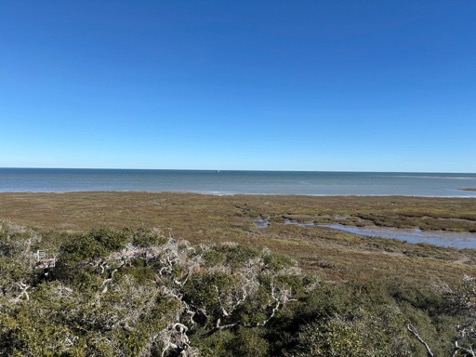
San Antonio Bay
On 24th of January 2025, at their 2024-25 Quarter 2 meeting, the EAC members took part in an exciting field trip to the Aransas National Wildlife Refuge (ANWR) to learn more about the critical connections between our river’s headwaters and the coastal bays and estuaries. The River Authority’s Environmental Sciences Department Manager, Shaun Donovan, accompanied the group and presented important information about freshwater inflows and various collaborations and partnerships for the management of the San Antonio River watershed and critical coastal ecosystems.
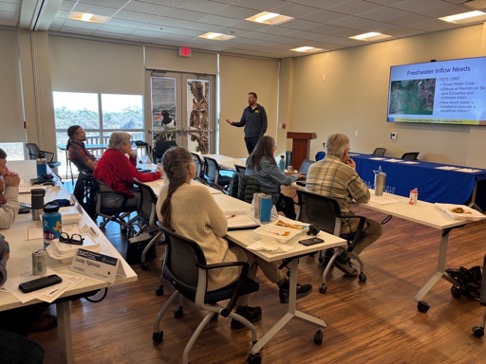
River Authority’s Shaun Donovan gives a presentation to the EAC.
EAC Co-chair and Texas Water and Coastal Resources Consultant to the International Crane Foundation (ICF), James Dodson provided vital insight into the habitat of the endangered whooping cranes that winter along the middle Texas coast.
Ten EAC members attended the meeting, along with River Authority Education and Engagement staff. After the meeting, the group toured the refuge with Liz Smith, Senior Research Associate at ICF and another Gulf Coast Program staff member. River Authority board member John Yochem was also in attendance along with an Alamo Area Master Naturalist and River Warrior volunteer, Cheryl Wallek.
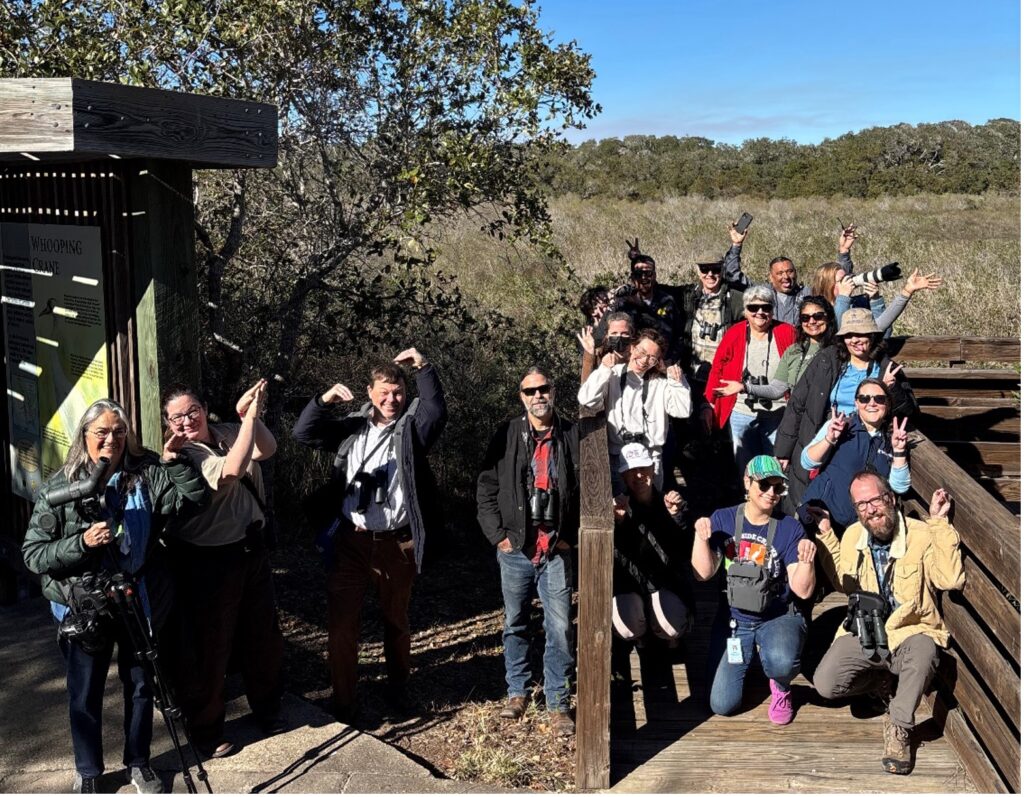
Showing off our best Whooping Crane impressions!
The group spotted three whopping cranes in their wintering habitat (two adults and one juvenile) at ANWR and many other coastal wetland birds like spoonbills, Sandhill Cranes, egrets, Grey Herons and Killdeer. Of course, the highlight of the tour was witnessing an endangered bird thriving in the wild!
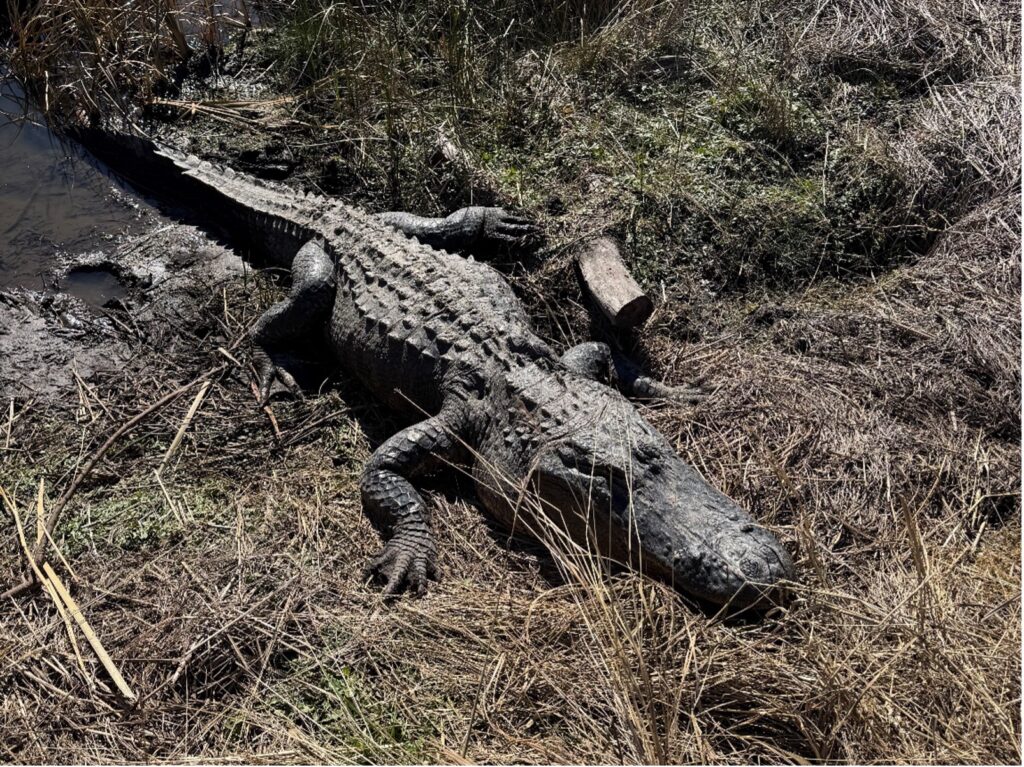
Along with many birds, our group saw a huge American Alligator in the marshes!
Why is the Whooping Crane important?
The Whooping Crane (Grus americana) is named for its distinct whooping call and is one of the rarest and oldest living bird species in North America. It is also the tallest, standing up to five feet, with a wingspan of up to 7.5 feet! The only remaining wild population of Whooping Cranes, called the Aransas-Wood Buffalo Population (AWBP), winters in the bays and estuaries near San Antonio Bay. This population of Whooping Cranes migrates from Canada, where it spends the summers, to Aransas National Wildlife Refuge.
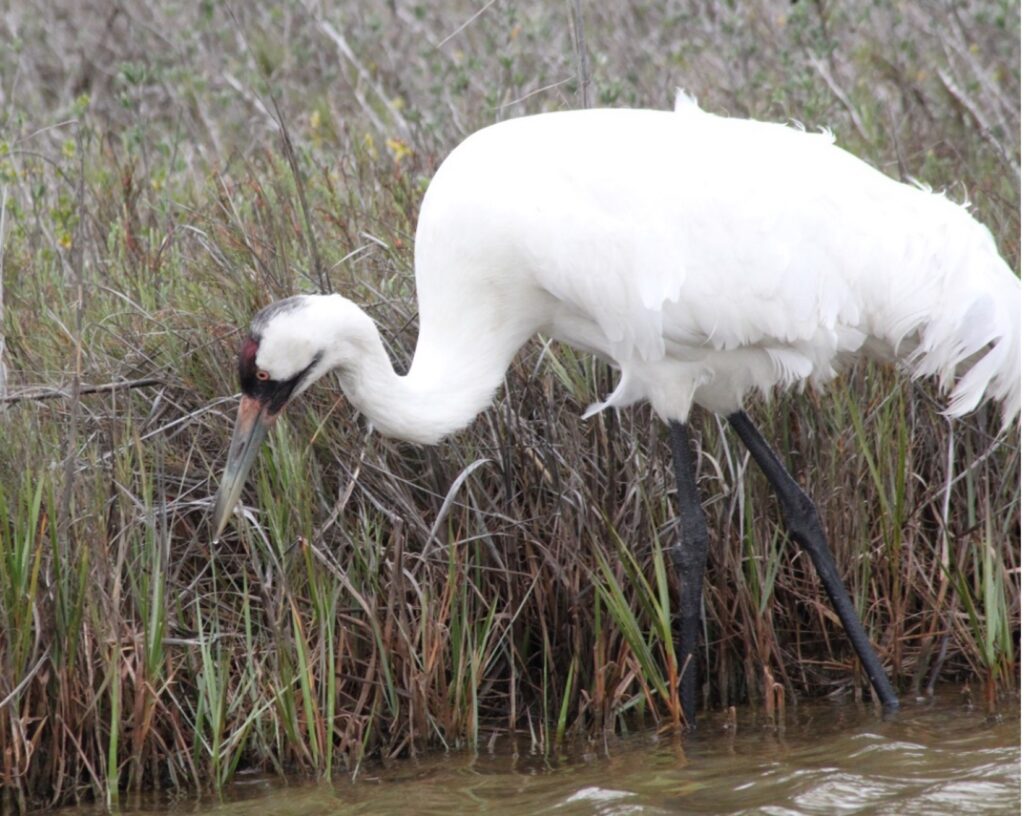
Whooping Crane at the Aransas National Wildlife Refuge
Like a Hollywood film, the whooping crane’s tale unfolds: tragedy at the start, a fight for redemption in the middle, and a hopeful, ambitious future at the end. Once reduced to near extinction, with as few as 15 cranes in 1941, recovery efforts have expanded the AWBP considerably in recent years. There are now 831 birds in the world today, with 536 found in the wild. The River Authority engages with numerous partners at the state, local, and federal levels to foster the understanding that healthy waters upstream contribute to healthy waters downstream and into the bay and estuary system where the Whooping Cranes rely on this vital thriving habitat for food and other survival needs.
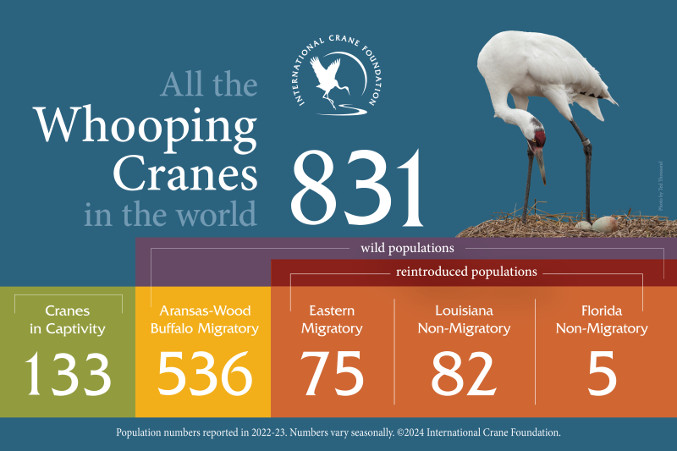
If you would like to contribute your expertise and time to being part of the important
EAC, please use the Contact Us form through the River Authority’s website.
Resources
Learn more about the amazing conservation success story of the endangered whooping cranes!
Whooping Cranes: Reflecting on 50 Years of ESA Protection and Habitat Conservation by USFWS
All About the Whooping Crane by NWF
Gulf Coast Whooping Cranes—A Conservation Story That Is Still Being Written. by ICF
Whooping Crane Festival in Port Aransas
How the River Authority supports Whooping Cranes
San Antonio River’s bays and estuaries

This piece is contributed by Minna Paul, Education and Engagement Officer with the River Authority.

